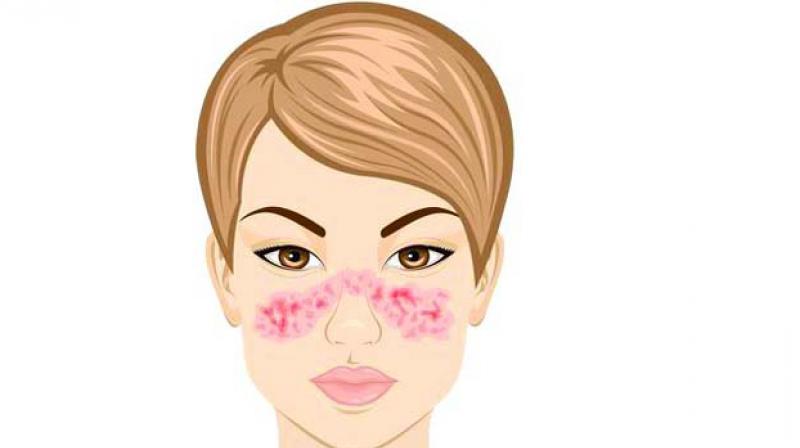Living with lupus: Women at a higher risk than men
Lupus causes the body's immune system to attack the body.

Vijayawada: Systemic Lupus Erythematosus (SLE) is a systemic autoimmune disease that affects 8-11 patients out of every one lakh in India. While there is no cure for lupus, where the body’s immune system turns on its own tissues treatment can help control the symptoms.
Nearly 15 cases of lupus were reported in Andhra Pradesh in just three months. Lupus strikes women nine times more than men. The disease is severe when it strikes children, men and elderly persons.
The most distinctive sign of lupus is a butterfly-shaped rash on the face that covers the cheeks and bridge of the nose or rashes elsewhere on the body. Fingers and toes turn white or blue when exposed to cold or during stress and fatigue.
Fever, pain in the joints, stiffness and swelling, skin lesions that appear to worsen with sun exposure (photosensitivity), shortness of breath, chest pain, dry eyes, headaches, confusion, weight loss and memory loss are some of the symptoms of lupus.
On the World Lupus Day, doctors say the right drugs taken in the correct dosage and for the prescribed time can control the effects of the disease. Early diagnosis and treatment can prevent organ damage and mortality.
Rheumatologist Dr Nunna Kavya Devi of Vijayawada said, “Lupus is a systemic autoimmune disease that occurs when the body’s immune system attacks its own tissues and organs.” Inflammation caused by lupus can affect many different body systems including the joints, skin, kidneys, blood cells, brain, heart and lungs.
“Lupus can be difficult to diagnose because its signs and symptoms often mimic those of other ailments, Dr Kavya Devi said. Hormonal imbalance, genetic causes and environmental factors, smoking and liquor consumption can aggravate lupus.
She said no two cases of lupus are exactly alike. Signs and symptoms may come suddenly or develop slowly, may be mild or severe, and may be temporary or permanent.
Most people with lupus have mild disease characterised by episodes called flares. Signs and symptoms get worse for a while, then improve or even disappear completely for a time, she added.

